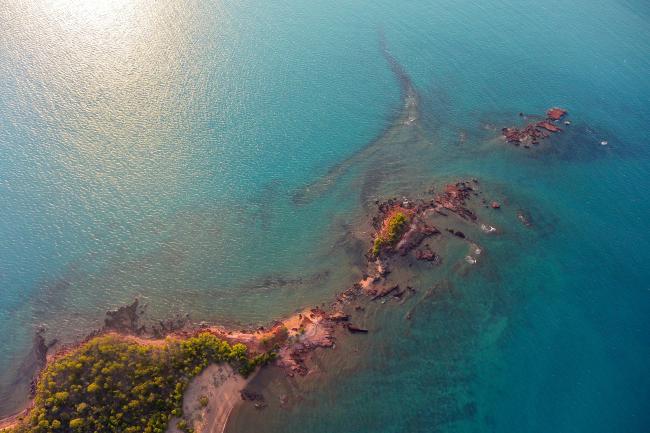Cobourg Peninsula
Cobourg Peninsula
- Country:
- Australia
- Site number:
- 1
- Area:
- 220,700.0 ha
- Designation date:
- 08-05-1974
- Coordinates:
- 11°20'49"S 132°13'47"E
Carousel
CarouselMaterials presented on this website, particularly maps and territorial information, are as-is and as-available based on available data and do not imply the expression of any opinion whatsoever on the part of the Secretariat of the Ramsar Convention concerning the legal status of any country, territory, city or area, or of its authorities, or concerning the delimitation of its frontiers or boundaries.
Cobourg Peninsula has a long history of natural conservation and protection, and it was Australia’s and the world’s first Wetland of International Importance. The Site covers an area of approximately 220,000 hectares and is composed of terrestrial, riverine, permanent freshwater and brackish and intertidal and coastal/marine ecosystems. It supports over 800 plant species, 64 species of coral, 406 species of marine invertebrate from the coral reef or the intertidal zone, 35 mammals, 71 reptiles, 19 frogs and 236 bird species. They include more than ten globally threatened animal species such as the critically endangered hawksbill turtle (Eretmochelys imbricata), endangered loggerhead turtle (Caretta caretta), green turtle (Chelonia mydas) and Merten’s water monitor (Varanus mertensi), and the vulnerable great knot (Calidris tenuirostris). The Site also supports over 600 fish species by providing feeding areas, dispersal and migratory pathways and spawning grounds. It contains many archaeological sites and features of indigenous, Macassan and European origin, and an ongoing “living culture” that is maintained by the Arrarrkbi, the traditional indigenous owners of Cobourg Peninsula. The majority of the Site is managed as a conservation reserve, with some tourism and education, commercial fishing and low-level traditional owner hunting and gathering. In the surrounding areas, cultured pearl farming, aquarium fish harvesting, mud crabbing, mackerel trolling and mineral exploration take place.
- National Park - Garig Gunak Barlu National Park
- AU1RIS_2207_en.pdf
- AU1RISformer_150123.pdf
- AU1RISformer_200227_1311_en.pdf
- AU1_map1502.pdf
- AU1_map210423.pdf
- AU1ECD2013.pdf
- AU1_mgt210423.pdf


